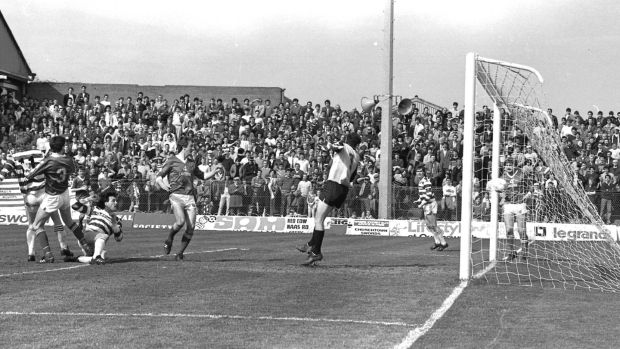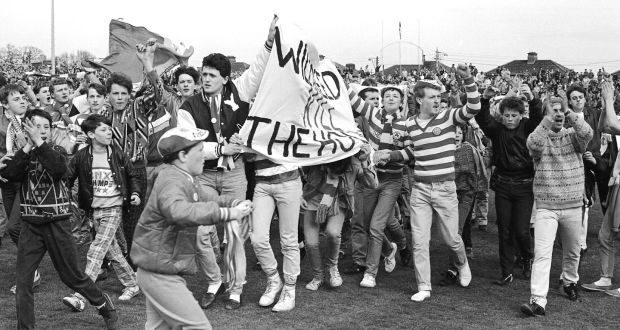
The day age-old rivals found common cause on a Dublin soccer pitch

By Leo Gray
There is hardly a more intense rivalry in Irish soccer than that which exists between supporters of Sligo Rovers and Shamrock Rovers. Depending on circumstances, the differences between the two sets of fanatical fans has ranged from witty and amusing banter to bitter and angry exchanges.
But, like all tribal encounters, there were times when compromise mattered more than confrontation, where a genuine concern for the common good and a shared love of League of Ireland soccer conquered age-old resentment and deep-rooted hostilities.
The most famous truce between the two groups came during the FAI Cup campaign of 1987 when supporters of both clubs came together in an unlikely show of solidarity against plans to sell Shamrock Rovers iconic home ground, Glenmalure Park in Milltown.
In their hour of need, the Hoops reached out far and wide for support for their campaign to save their treasured home – even Paul Heaton, the lead singer with world famous super group, the Housemartins, lent his name to the effort, and financial assistance came from as far away as Australia.
But perhaps the greatest show of resistance came from within the League of Ireland community and, specifically, from the genuine support of Sligo Rovers fan base.
To put the Sligo fans’ gesture into context, it is important to note that there was never much love lost between the two sets of supporters and the rivalry between the clubs reached new heights following the 1978 FAI Cup final when a hotly disputed penalty helped the Dublin club snatch a highly controversial victory over the Bit O Red.
The passing seasons only served to intensify the sense of injustice and when the sides were drawn against each other in the semi-final of the FAI Cup in 1987, there were many hardened Sligo fans who saw this as a timely opportunity to gain revenge for all the wrongs they had suffered nine years previously.
The semi-final was scheduled as a two-legged contest that season. The first instalment at the Showgrounds ended in a tense scoreless draw so it was all to play for in the second leg at Milltown on April 12th.
In Sligo, the focus was exclusively on getting the required result in the second game but the priorities were slightly more complex for the Hoops.
Yes, they were determined to get to the final, but the game was likely to be the last ever match at the storied Milltown stadium and the growing protests surrounding plans to sell the ground catapulted the fixture into national headlines, and much of the coverage had more to do with off-the-pitch issues rather than the outcome of the match.
A protest group, KRAM (Keep Rovers At Milltown) had gained massive profile, nationally and internationally, and were determined to make one last show of strength at the semi-final encounter.
Nobody was quite sure what would transpire by way of protest but, in any event, it didn’t deter the loyal Red Army from travelling in huge numbers for the game, helping to swell the attendance to a capacity 6,000.
Tony O’Kelly, a muscular and hard-working centre-forward, headed home from Tony Fagan’s measured free kick to give Sligo Rovers the lead early on. However, Shams equalised through Mick Byrne soon afterwards and the scene was set for a compelling second half.
But as soon as the players left the field at the interval, the mood on the terraces, which had been carnival-like on a warm Spring afternoon, suddenly became dark and threatening.
Hundreds of Shamrock Rovers fans stormed on to the pitch, congregating in the centre-circle, and for a brief moment it looked as if it would all boil over. But the protestors were driven by a genuine desire to highlight their disgust at the proposed sale of their beloved ground rather than any violent intent. As they began a sit-down protest, there was sudden movement on the terrace populated by Sligo Rovers supporters.
First a trickle, then a steady flow of red and white clad fans climbed over the perimeter fence and made their way across the pitch to join the Shams supporters.
Within minutes, there were hundreds of Sligo fans on the pitch and many of those watching the unfolding drama feared something sinister was afoot.
But they needn’t have worried. The visiting fans, themselves well accustomed to facing adversity, found common cause with their Dublin counterparts, and far from wanting to engage in any show of unruly behaviour, were motivated only by a determination to lend added substance to the protest.
For once, the colour of the shirt you wore, or the accent with which you spoke, didn’t matter. This was a united outpouring of emotion, an unprecedented act of solidarity involving two tribes of committed, loyal football fans, bonded together by a common love of football.
The protest only ended when Shamrock Rovers player-manager, Dermot Keely, came out to speak to the fans, persuading them to return to the terraces and let the second half commence.
After a ten minute delay, the action resumed on the pitch but the deadlock remained unbroken and a third game was required to settle the issue.
The teams lined out as follows in the last match at Glenmalure Park:
Shamrock Rovers: J Byrne, Kenny, Eccles, Keely, Brady, Murphy, P Byrne, Dignam, Neville, Larkin, M Byrne.
Sligo Rovers: Davis, O’Connell, Spring, Chubb, Scanlon, Fagan, Burke, Bayly, Savage, McLoughlin, O’Kelly.
The following day, the national papers gave front page coverage to the protest and the Irish Times even suggested that the last match at Milltown demanded the presence of the “Distant Drums”, Shamrock Rovers great Dublin rivals who had recently gone out of football, rather than Sligo Rovers.
I felt this amounted to a bit of an insult to Sligo Rovers and wrote a piece in the next edition of The Sligo Champion taking the Irish Times to task. I argued that no team in Ireland knew more about the struggle for survival or the importance of securing the future of their own ground than Sligo Rovers. And, as such, there were no more appropriate opponents for Shams in their last match at Milltown than Sligo Rovers.
The late Sean Kilfeather, a proud Sligoman who worked as a sports journalist with the Irish Times, told me later he cut out my piece from the Champion and pinned it to the desk of the paper’s soccer correspondent.
So how did the Milltown saga end? The Kilcoyne family, who owned Shamrock Rovers, sold the ground for property development for a reported 950,000 euro and a housing estate now stands on the site of the former soccer stadium.
The semi-final was eventually decided in a third match at the Showgrounds. Noel Larkin scored the winner for the Hoops in the last minute and the Dublin club went on to win the Cup, defeating Dundalk in the final.
The third instalment of the semi-final was noteworthy for another reason as it brought the curtain down on Tony Fagan’s long and illustrious career with the Bit O Red.
Meanwhile, the fierce rivalry between Sligo Rovers and Shamrock Rovers is as strong, if not stronger, than ever. But that sunny afternoon in April, 1987 when the two tribes called a temporary truce remains a significant chapter in the history of both clubs.
